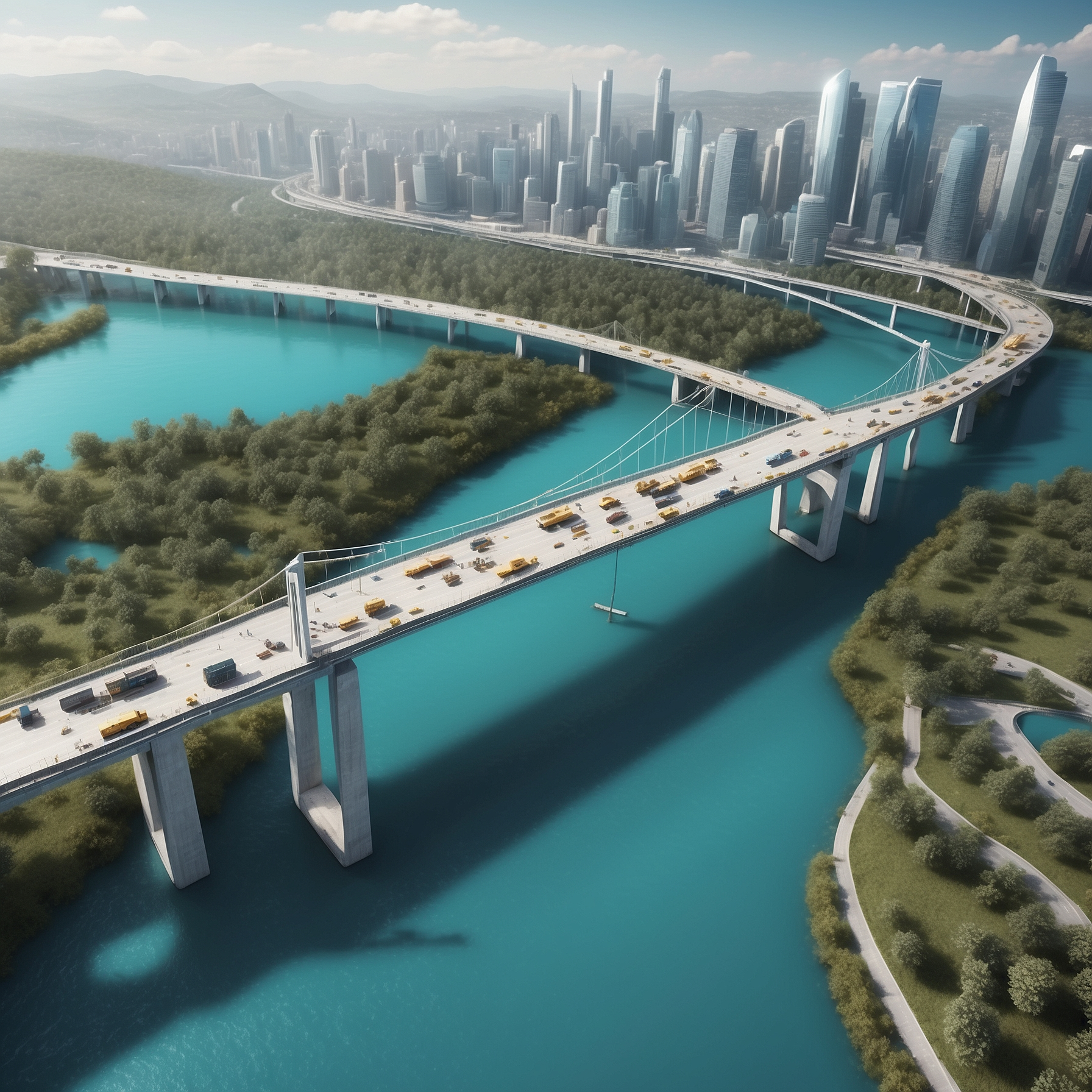Alright, let’s dive into the wild world of economics—don’t worry, we’ll keep it as thrilling as a roller coaster ride through Wall Street. Every country on this spinning globe operates under some type of economic system: command, mixed, free market, socialist, capitalist, you name it. Each system brings its own set of perks and quirks to the folks living under its umbrella. Today, we’re shining the spotlight on the command economy. What’s in it for the people and countries that embrace this system? Before we unwrap the benefits of a command economy, let’s first get a handle on what the heck it actually is.
Curious about the flip side? Check out the benefits of a free enterprise system and see how it stacks up!
What is a command economy?

Imagine having an overbearing parent who decides everything for you—what you eat, what you wear, even what time you go to bed. That’s kinda how a command economy works! In a command economy, the government is the big boss, calling all the shots. They plan and regulate how much of everything is produced and set the prices for goods and services in the market. It’s often dubbed a centrally planned economy because, well, a central authority (spoiler alert: usually the government) makes all the big decisions about production, distribution, and exchange of goods and services.
Command economies are like the rebellious cousin of the free enterprise system, which lets private ownership and market forces of demand and supply run the show. In contrast, command economies are often linked with communism and the brainchildren of Karl Marx and Frederick Engels. Here, the government grabs the reins, controlling resources, deciding how and what to produce, how much of it, and setting the prices. Talk about micromanaging!
Sure, the command economy has its downsides—plenty of folks aren’t thrilled about the restrictions and the perceived infringement on personal freedom. But hey, every cloud has a silver lining, right? Let’s dive into the benefits of a command economy and see what the fuss is all about.
Example of command economy
Ever heard of North Korea? Yep, they’re the poster child for a modern-day command economy. In North Korea, the government holds the puppet strings on all economic activities—industry, agriculture, trade—you name it. The state owns all major industries, and they centrally plan production, distribution, and pricing of goods and services. They even control resources like land, labor, and capital, doling out how much goes where. Oh, and they decide where you live and work too. Cozy, right?

Consumer choice? What’s that? The government dictates what goods and services are produced and available, and they set the prices. Information is tightly controlled, so citizens often have no clue about what’s out there—or isn’t. This leads to a pretty limited range of consumer goods and services, with basics often in short supply. If you’re dreaming of variety, you might be out of luck.
Interested in how socialism plays into all this? Dive into the benefits of socialism.
How do command or socialist economies benefit their citizens?
So, what’s in it for the everyday Joe or Jane in a command or socialist economy? Well, these economies can bring several perks to the table:
- Low or nonexistent unemployment levels
- Reduced inequality among citizens
- Guaranteed access to necessities like food, shelter, education, and healthcare
Since the government’s at the helm, production is driven by the needs of the people rather than the pursuit of profit. This centralized planning can help stabilize the economy and fast-track the achievement of national goals set by the powers that be. In many cases, command and socialist economies aim to overcome market failures and put citizens’ welfare front and center.
Want to see another angle? Check out the benefits of the Bracero Program.
Command economy benefits
- Absence of monopolies
- Improved mobilization of resources
- Adequate social welfare
- Quick decision-making
- Prompt response to emergencies
- Inequality is nonexistent
- Consistent production
- Flexibility of individuals and industries
- Access to basic amenities
- Minimal unemployment
Absence of monopolies
Monopolies? Not on this government’s watch! One of the perks of a command economy is that monopolies are basically a non-issue. Since the government controls all the factors of production—land, factories, capital—they’re in charge of all industries and companies. There’s no room for private businesses to swoop in and dominate the market. Unlike in a free market economy where companies scramble for comparative advantages and monopolies can sprout like weeds, the command economy keeps a tight lid on things. No independent producers mean no monopolies. It’s government monopoly or bust!
Improved mobilization of resources
Need resources? The government’s got you covered. One cool thing about command economies is their ability to mobilize resources efficiently. Since the central authority plans the economy and calls the shots on production methods and quantities, they can shuffle resources around like a pro card dealer. Got a massive project? No problem. The government pools the necessary resources to meet production goals and national plans. The fast-paced industrialization often seen in command economies is a testament to their resource-wrangling skills.
Adequate social welfare
Social welfare is no joke in a command economy. Taking care of the vulnerable—the elderly, disabled, and those unable to work—is a top priority. The government plans and provides programs to ensure these folks have a decent quality of life. It’s like a community where everyone chips in to support each other, and the government makes sure no one slips through the cracks. This sense of communal responsibility is a big plus in command economies.
Quick decision making
Ever been bogged down in endless meetings trying to make a decision? In a command economy, that’s not a problem. The government is the sole decision-maker, so they can make choices swiftly and efficiently. No need to consult multiple stakeholders or navigate through corporate red tape. They decide, and things get rolling. This agility is crucial for implementing economic plans and adapting to changes on the fly. If something isn’t working, they can pivot quickly without jumping through hoops.
Prompt response to emergencies
When disaster strikes, speed matters. Command economies shine here because the government can act fast, deploying resources and aid without delay. Whether it’s a natural disaster like a flood or earthquake, the central authority can ramp up production in unaffected areas and channel goods and services to where they’re needed most. It’s like having a rapid-response team on standby, ensuring that the community bounces back as quickly as possible.
Inequality is nonexistent
Looking for a level playing field? Command economies aim to squash inequality. By controlling the means of production and regulating wages through minimum and maximum limits, the government ensures that wealth disparities are minimal. There’s no room for individuals to amass excessive wealth by owning businesses or raking in huge profits. Everyone earns within a set range, reducing class distinctions based on wealth. Sure, government officials might have a bit more, but overall, the society is more balanced.
Consistent production
Consistency is key in a command economy. The government ensures steady production levels to meet the needs of its citizens, regardless of profit margins. With set operational structures and production targets, industries churn out goods in line with the central plan. This focus on efficiency and meeting demand helps maintain a balance between supply and demand. Critics might argue that this doesn’t always guarantee adequate supply, but supporters see it as a reliable way to keep the economy humming along.
Flexibility of individuals and industries
Flexibility is the name of the game. In a command economy, both individuals and industries can pivot quickly to meet the government’s projects and goals. Need 100 workers for a new road? The government assigns them. Require increased production of materials? Industries ramp up as directed. Since the government oversees job assignments and resource allocation, projects get the manpower and materials they need without the usual hurdles. It’s a coordinated effort that keeps things moving smoothly toward national objectives.
Access to basic amenities
Basic needs? Covered. In a command economy, the government ensures that all citizens have access to essentials like food, shelter, education, healthcare, and transportation. Since the state controls production and there’s no private-sector competition, resources are allocated to produce what people need rather than what’s most profitable. This focus on necessities over luxuries means that everyone gets a fair share of the essentials, promoting a sense of equity and social cohesion.
Minimal unemployment
Unemployment? What’s that? A standout benefit of a command economy is the minimal levels of unemployment. The government assigns jobs to everyone capable of working, believing that idleness isn’t an option. Massive industries, infrastructure projects, and research initiatives create plenty of job opportunities. By directing resources and implementing policies to promote job creation, the government keeps everyone engaged in the workforce. This not only reduces unemployment rates but also boosts the economy’s overall productivity.
Interested in different economic perspectives? Explore the liberal view on the economy.
Takeaways: Benefits of living in a command economy

To sum it up, living in a command economy comes with its own set of perks:
- Efficient Resource Allocation: Central planning directs resources where they’re most needed, aiming to avoid waste and duplication.
- Greater Social Equity: Provision of basic needs to all citizens reduces inequality and promotes a more equal society.
- Rapid Industrialization: Focused investment and resource allocation can speed up industrial growth.
- Reduced Unemployment: Government policies promote job creation, ensuring everyone capable has work.
- Greater Economic Stability: Government control over prices and production helps prevent economic crises.
By controlling production and distribution, the government strives to meet the citizens’ needs and maintain a stable economy. However, it’s important to recognize the criticisms. Central planners may not always make optimal decisions, leading to inefficiencies. Lack of market competition can stifle innovation and limit individual freedoms, as choices are restricted to what the government provides.
Despite these challenges, command economies aim to prioritize the welfare of their citizens, ensuring access to essential goods and services, and promoting a more equitable society.
For another viewpoint, check out the conservative view on the economy.
